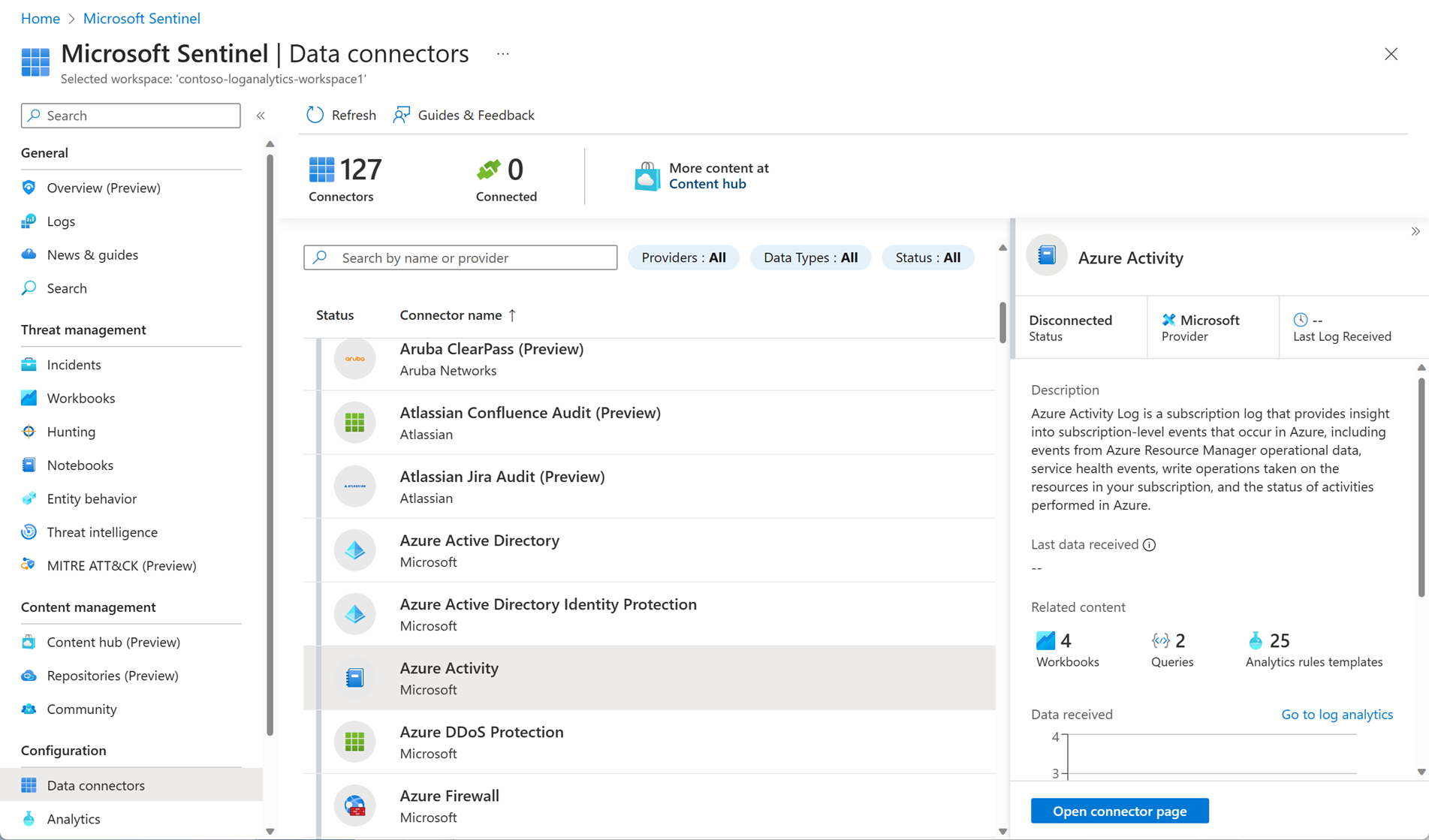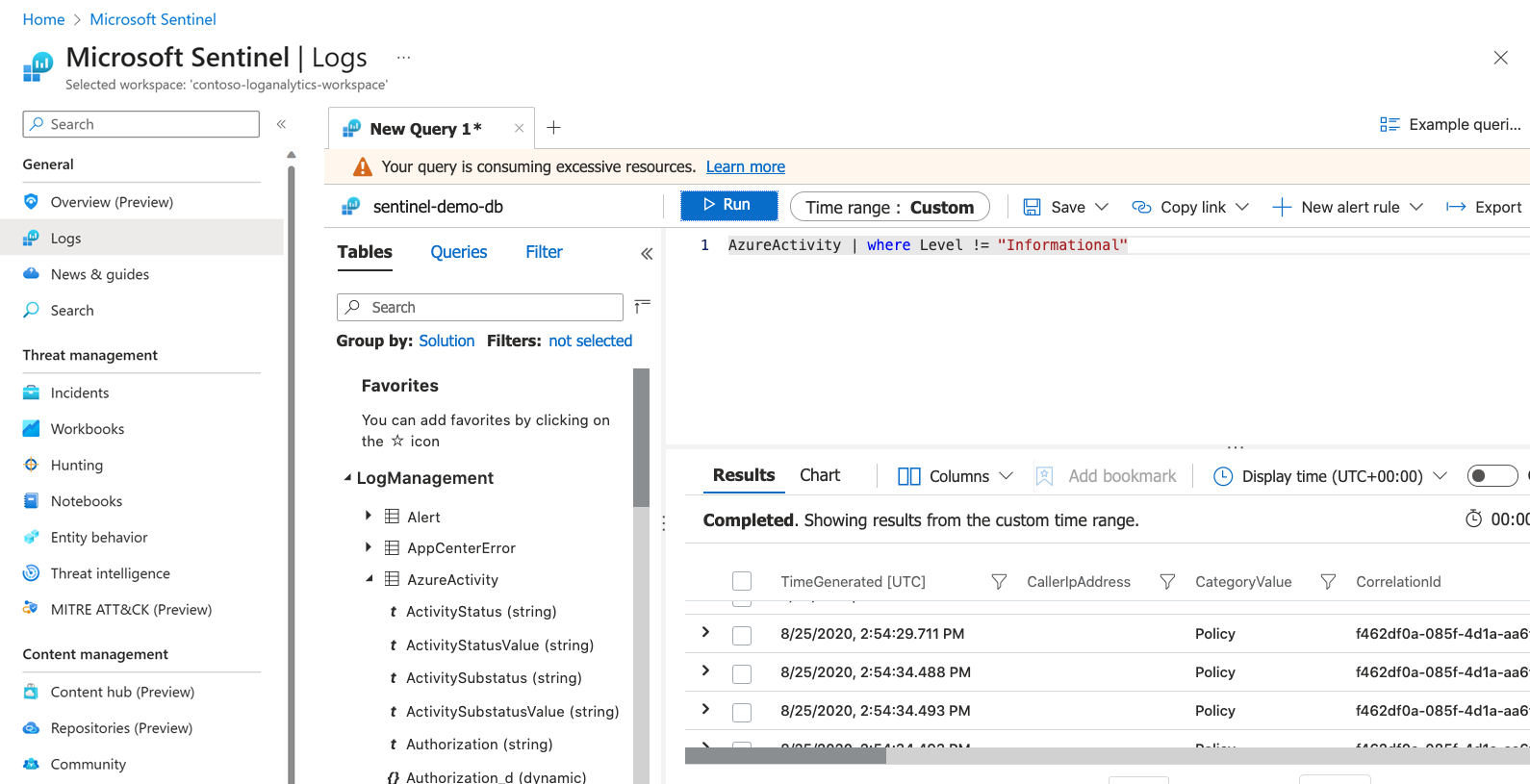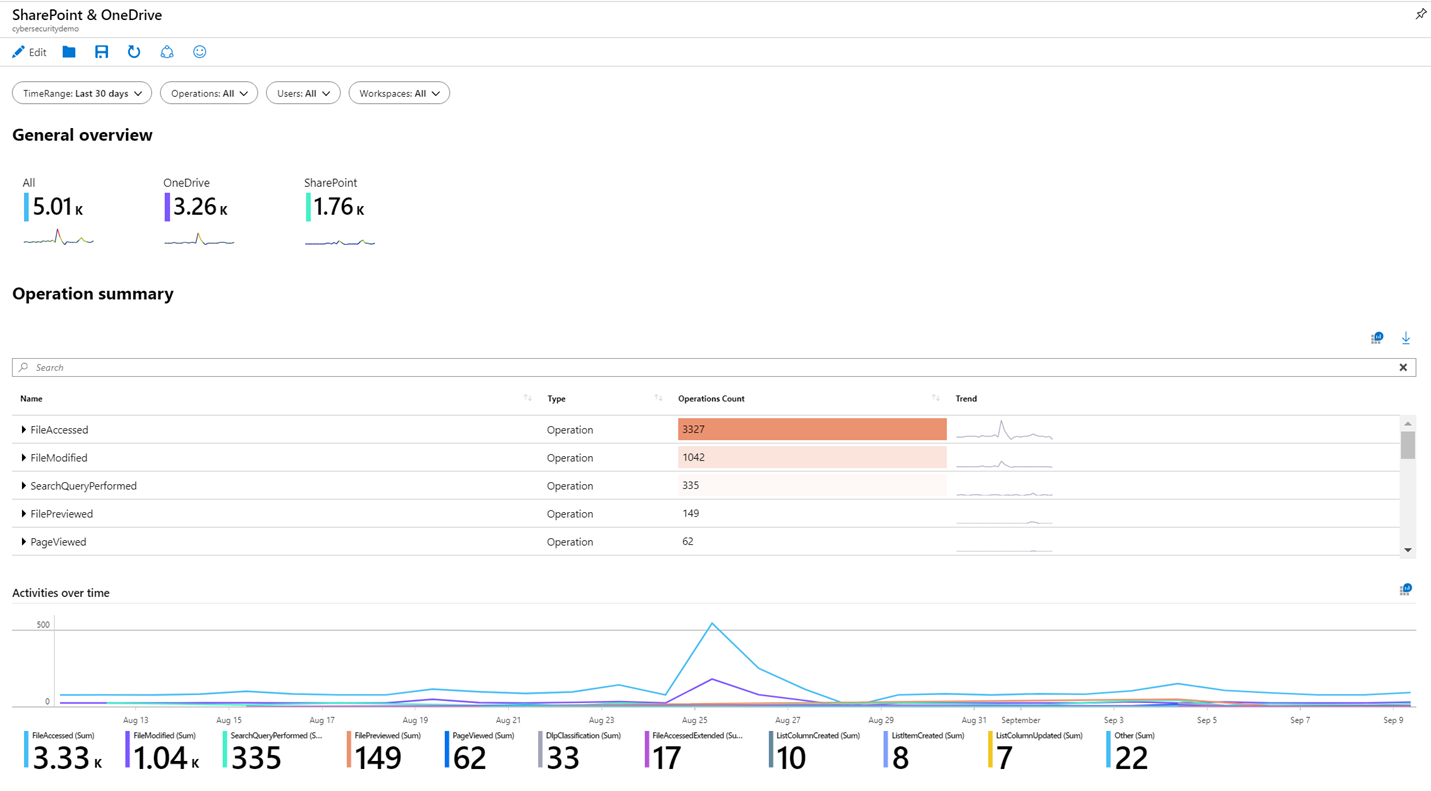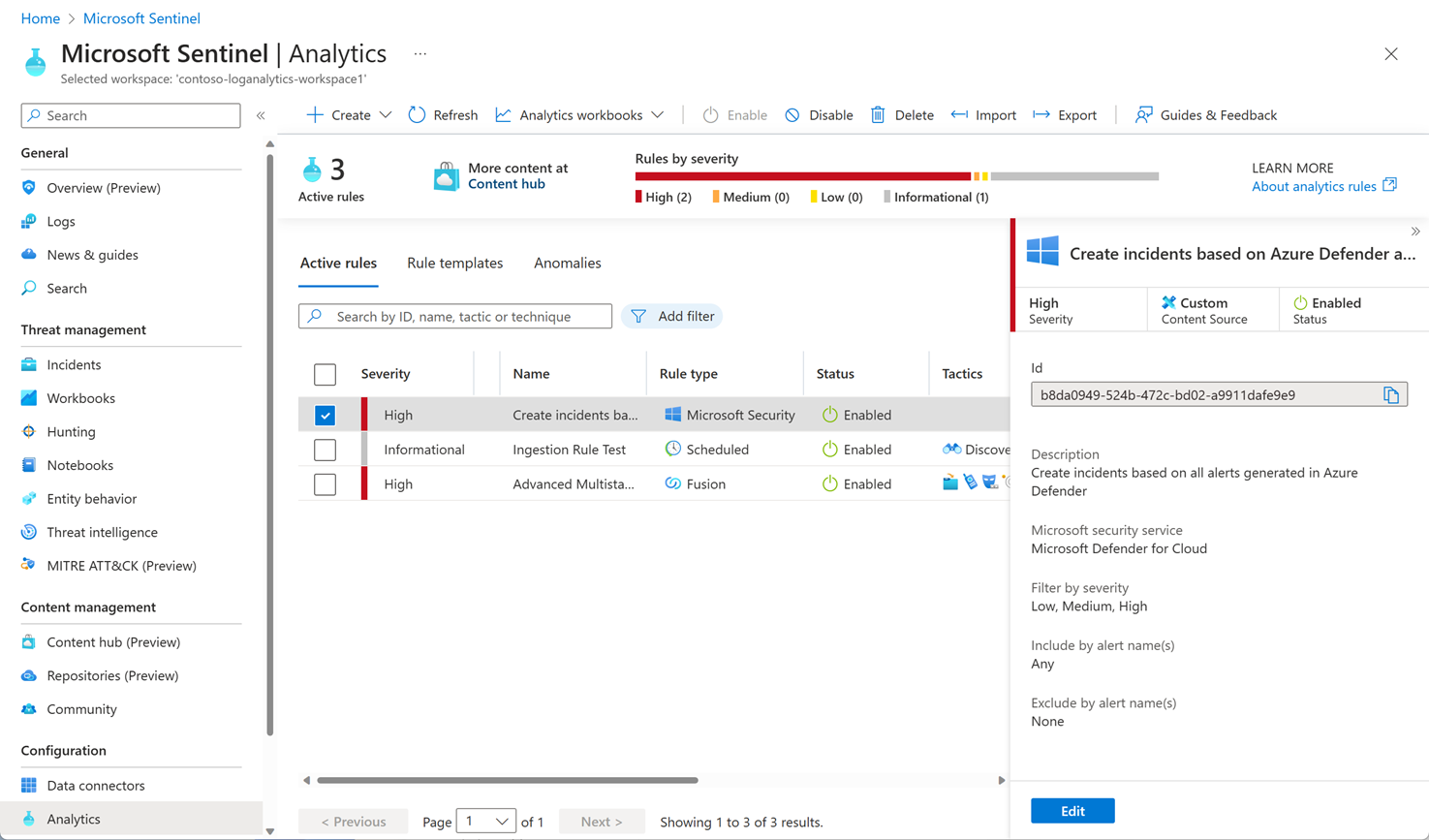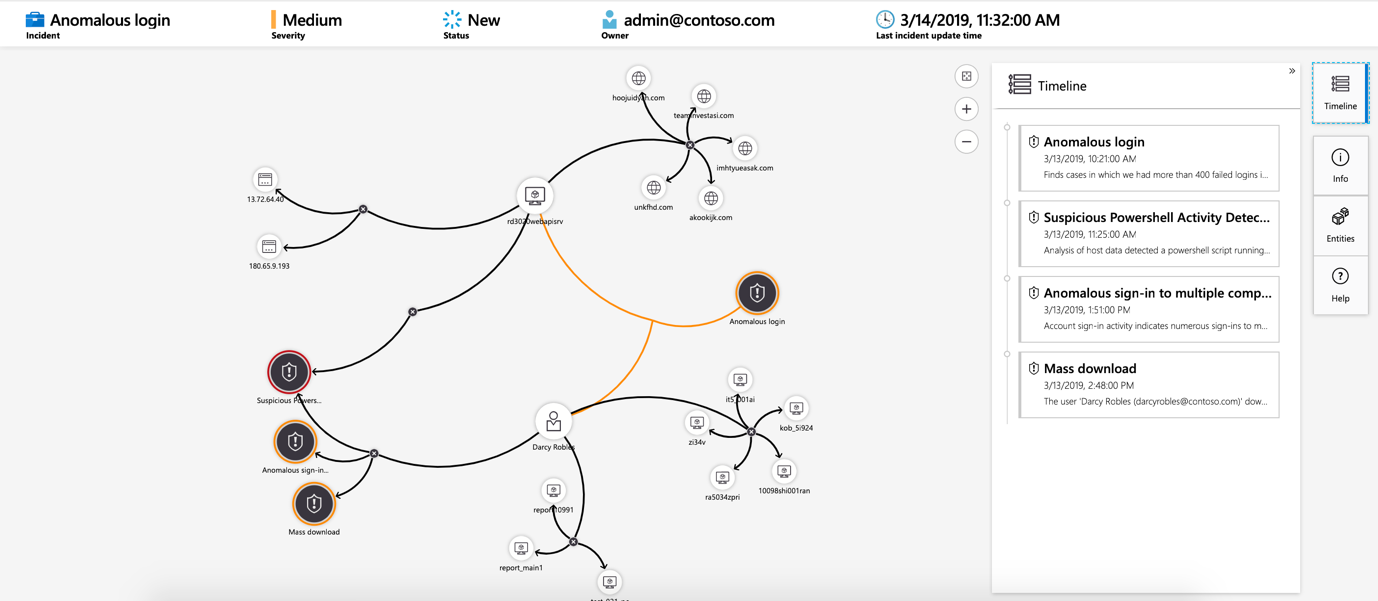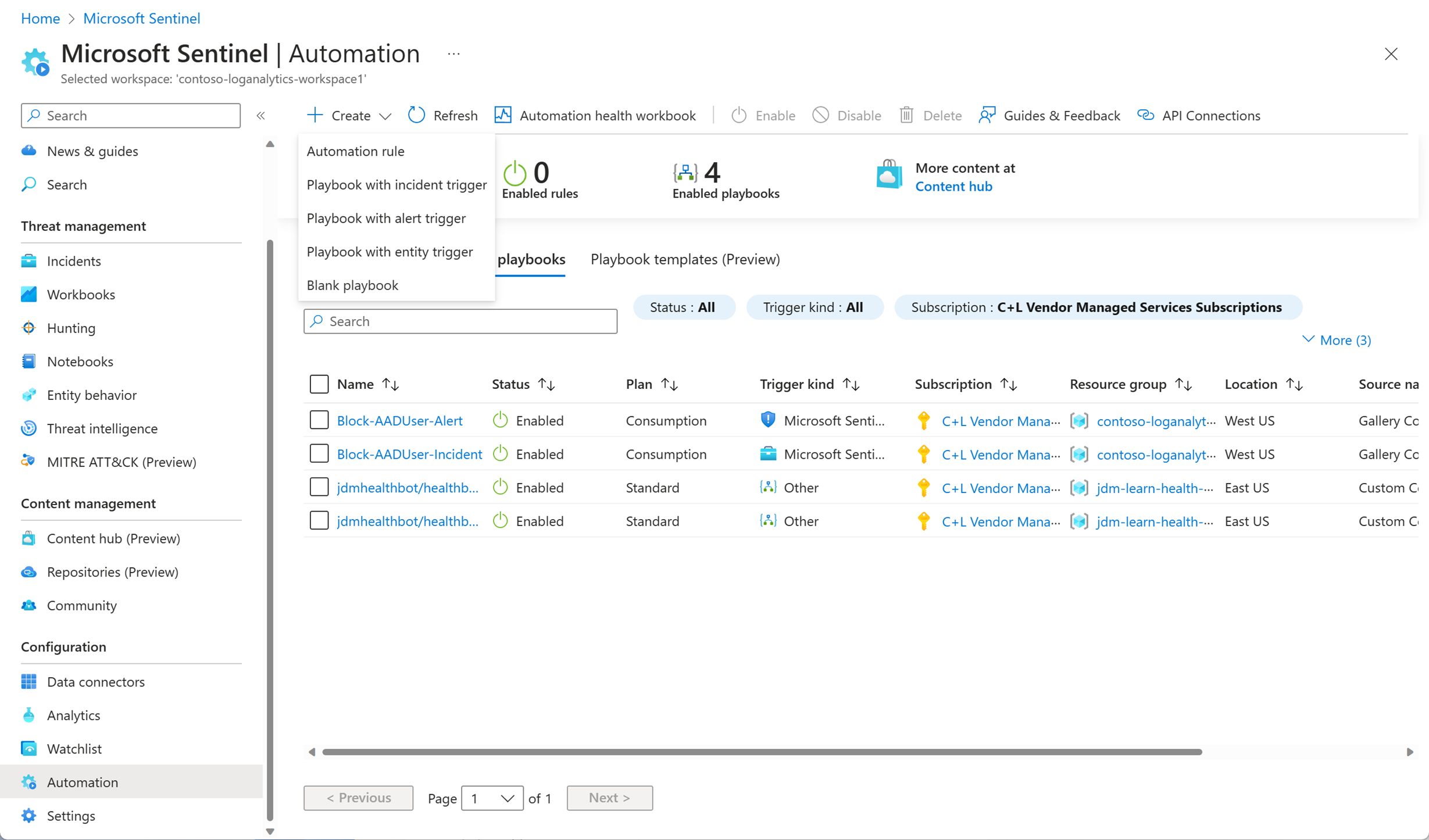How Microsoft Sentinel works
As you've already learned, Microsoft Sentinel helps you enable end-to-end security operations. It starts with log ingestion and continues through to automated response to security alerts.
Here are the key features and components of Microsoft Sentinel.
Data connectors
The first thing to do is to have your data ingested into Microsoft Sentinel. Data connectors let you do just that. You can add some services, such as Azure activity logs, just by selecting a button. Others, such as syslog, require a little configuration. There are data connectors that cover all scenarios and sources, including but not limited to:
- syslog
- Common Event Format (CEF)
- Trusted Automated eXchange of Indicator Information (TAXII) (for threat intelligence)
- Azure
- AWS services
Log retention
After it's been ingested into Microsoft Sentinel, your data is stored by using Log Analytics. The benefits of using Log Analytics include the ability to use the Kusto Query Language (KQL) to query your data. KQL is a rich query language that gives you the power to dive into and gain insights from our data.
Workbooks
You can use workbooks to visualize your data within Microsoft Sentinel. Think of workbooks as dashboards. Each component in the dashboard is built by using an underlying KQL query of your data. You can use the built-in workbooks within Microsoft Sentinel and edit them to meet your own needs, or create your own workbooks from scratch. If you've used Azure Monitor workbooks, this feature will be familiar to you, because it's Sentinel's implementation of Monitor workbooks.
Analytics alerts
So far, you have your logs and some data visualization. Now it would be great to have some proactive analytics across your data, so you're notified when something suspicious occurs. You can enable built-in analytics alerts within your Sentinel workspace. There are various types of alerts, some of which you can edit to your own needs. Other alerts are built on machine-learning models that are proprietary to Microsoft. You can also create custom, scheduled alerts from scratch.
Threat hunting
We won't dive deeply into threat hunting in this module. However, if SOC analysts need to hunt for suspicious activity, there are some built-in hunting queries that they can use. Analysts can also create their own queries. Sentinel also integrates with Azure Notebooks. It provides example notebooks for advanced hunters who want to use the full power of a programming language to hunt through their data.
Incidents and investigations
An incident is created when an alert that you've enabled is triggered. In Microsoft Sentinel, you can do standard incident management tasks like changing status or assigning incidents to individuals for investigation. Microsoft Sentinel also has investigation functionality, so you can visually investigate incidents by mapping entities across log data along a timeline.
Automation playbooks
With the ability to respond to incidents automatically, you can automate some of your security operations and make your SOC more productive. Microsoft Sentinel allows you to create automated workflows, or playbooks, in response to events. This functionality could be used for incident management, enrichment, investigation, or remediation. These capabilities are often referred to as security orchestration, automation, and response (SOAR).
As the SOC Analyst, you now start to see how Microsoft Sentinel might help you achieve your goals. For example, you could:
- Ingest data from your cloud and on-premises environments.
- Perform analytics on that data.
- Manage and investigate any incidents that occur.
- Perhaps even respond automatically by using playbooks.
In other words, Microsoft Sentinel gives you an end-to-end solution for your security operations.
